"It is dangerous to be right in matters on which the established authorities are wrong." -Voltaire
It's been another great week over on the main Starts With A Bang blog, where we got to touch on a number of remarkable topics, including:
- Why are we made of matter? (For Ask Ethan #31)
- Trompe-l’œil Art (For our Weekend Diversion)
- The Farthest Messier Object for now, M58 (For Messier Monday)
- The secret of the galaxy’s most famous nebula
- Incredibly rare “back-to-back” maximum eclipses are coming!
- and The Lives and Deaths of Sun-Like Stars (For Throwback Thursday)
As always, you've had your say here on our forum, including a number of interesting follow-ups on last week's comments of the week. Without further ado, here are my five favorites, and my responses to them!
From Peter Krahulik on the subject of why we're made of matter: Until now my suspicion was that the antimatter got stable a bit earlier than the matter and collapsed into black holes or decayed into dark energy. How would we know if a black hole consisted of antimatter anyway?
This is going to sound a little puzzling to you, but we wouldn't. Black holes -- at least, from the outside -- can only have a few properties that allow us to tell them apart. They are: mass, electric charge, angular momentum (or its rate-of-spinning), color charge and/or weak charge (although those cases have not yet been worked out, to my knowledge) and magnetic charge, if such a thing exists in our Universe. Those are the only types of "hair" a black hole is allowed to have, as anything else, including baryon number, lepton number, isospin, and yes, whether it descended from matter or antimatter, simply is irrelevant.
Remember, when you're outside of a black hole, all you can measure is how the spacetime external to the event horizon is altered. Since matter and antimatter simply have mass, electric charge and sometimes color/weak charges as well, those are the only properties that matter. In particular, they both have positive mass, and so there'd be absolutely no detectable difference between a black hole that was made from hydrogen atoms and one that was made from anti-hydrogen atoms. Interesting stuff!
From Michael Kelsey on the subject of why we're made of matter: Hawking radiation is thermal, and by construction which particle of the pair escapes is random, so I don’t think your analysis is quite right. (For reference, this is in response to Sean T, who had earlier stated: I would think that Hawking radiation would be of inverted parity for an antimatter black hole.)
Hawking radiation, for those who don't know, is how black holes radiate. Eventually, all black holes will wind up evaporating entirely, due to this radiation process. It's commonly presented as though matter-antimatter pairs are constantly popping in-and-out of existence, and sometimes, when a pair is created near the horizon, one falls in while the other escapes, causing the black hole to lose mass.
 Image credit: Oracle Thinkquest, via http://library.thinkquest.org/.
Image credit: Oracle Thinkquest, via http://library.thinkquest.org/.
This picture, as it turns out, is grossly oversimplified to the point of being wrong. Michael is correct in that the Hawking radiation of normal-matter black holes and antimatter black holes would be identical, but it isn't because it doesn't matter which member of the pair escapes. First off, you have to remember that these are virtual particles, not real "matter-antimatter" pairs of particles that you could collide with. They're merely one way to represent the energy inherent to the quantum vacuum (empty space) itself.
But what comes out of the black hole is neither matter nor antimatter particles; it's simply radiation in the form of photons. And the flux of photons -- including their energy and their energy distribution -- comes primarily from the following quantum field theory reaction: two virtual particle-antiparticle pairs where one has the particle fall in and one has the antiparticle fall in. The antiparticle-particle pair on the outside then (virtually) annihilate, producing pure radiation.
Again, because all that's coming out is energy in the form of photons (at least, until the radiation becomes energetic enough to produce neutrinos, electron/positron pairs and eventually pions, which will take some ~10^60 years), there's not only no difference between black holes made of matter or antimatter, there's practically no difference between the radiation around charged or uncharged black holes. As much as I'd love for there to be an observable signature of the differences, physics simply doesn't provide one.
From Sinisa Lazarek on last week's comments of the week, as respects the Multiverse: I am not sure what Ethan means by this sentence “BICEP2 results tell us about inflation is that it occurred at an energy of ~a few × 10^16 GeV, which is well below both the Planck energy…” Plank scale is at 10^19 GeV, which is damn close IMO. It’s not 20 orders of [magnitude] different, or 120… Yes, it’s not at exactly [Planck[ scales, but very near them. It’s like comparing millimeter and meter.. 3 orders difference.
What I was talking about was the Multiverse, and the notion that different "pocket Universes" might have different fundamental constants.
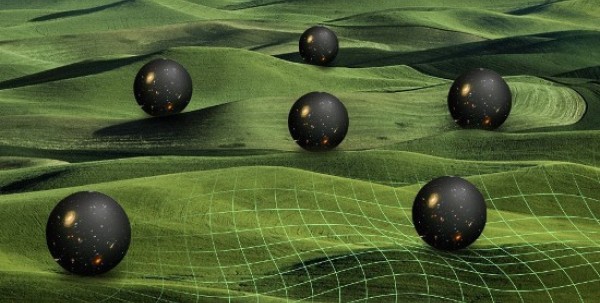 Image credit: Mario Livio, via http://www.huffingtonpost.com/mario-livio/how-can-we-tell-if-a-multiver….
Image credit: Mario Livio, via http://www.huffingtonpost.com/mario-livio/how-can-we-tell-if-a-multiver….
In particular, I said that they probably don't, because the energy scales of inflation are well below -- by around a factor of 1000, as Sinisa notes -- the energy scales that would be required at minimum for the constants to be dynamically different. Now a factor of 1000 might not seem like much to you; after all, mountains are 1000 times larger than us and we can perceive the whole thing, and the thickness of a dime is 1000 times smaller than we are.
But when it comes to energy, a factor of 1000 is huge. At energies 1000 times greater than room temperature, it is impossible for electrons to stay bound to atomic nuclei, but at room temperature, the odds of an atom becoming ionized from the 300 K thermal radiation is practically zero. Similarly, at energies 1000 times lower than room temperature, helium loses all viscosity, and becomes a superfluid.
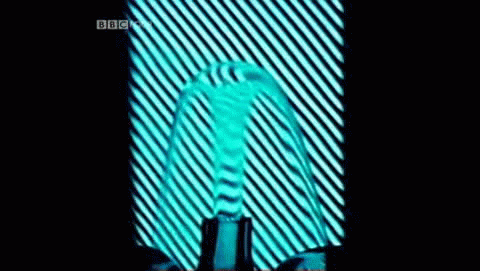 Image credit: BBC, via http://i.imgur.com/6Bd3rmu.gif.
Image credit: BBC, via http://i.imgur.com/6Bd3rmu.gif.
The odds of this happening at room temperature, of course, are also practically zero. Energy effects are exponentially suppressed, so when you have a factor of 1000 difference, your odds of having the thing-you-want happen are suppressed by somewhere around e^(-1000), which is about 1-in-10^430. It's not impossible, but I think we can safely say it's very effectively suppressed.
From Markm on the rare back-to-back eclipses: Um… Did you know that two is plural? … two WEEKS… ! This was immediately followed by Chad on the same topic: Oh my god!! I hope your typo costs you your blog about english…. er um space….
Yes, I did. I made a typo, writing "two week" where I should've written "two weeks." The world is clearly over now. Here, have this image I found to celebrate my mistake.
 Image credit: member ineffable of Planet Minecraft, via http://www.planetminecraft.com/blog/grammar-nazi-your-doing-it-wrong/.
Image credit: member ineffable of Planet Minecraft, via http://www.planetminecraft.com/blog/grammar-nazi-your-doing-it-wrong/.
From rob on the topic of back-to-back eclipses: I noticed that the Encyclopedia Britannica pic of the moons path around the sun (in your Medium.com post about these eclipses) is wrong.
This is the image rob is referring to.
You see, there are a few different ways of visualizing how the Moon moves around the Sun. Yes, it's true that the Earth makes a nearly circular ellipse around the Sun, but it's also true that the Moon makes its own nearly circular ellipse around the Earth while also moving around the Sun! The Moon makes a little more than 12 full orbits around Earth in the time it takes Earth to make one orbit around the Sun, but the Moon's orbit around the Earth is much smaller -- only about 800,000 km along its major axis -- than the Earth's orbit around the Sun.
So, which of the following pictures best approximates how the Moon's orbit around the Sun looks?
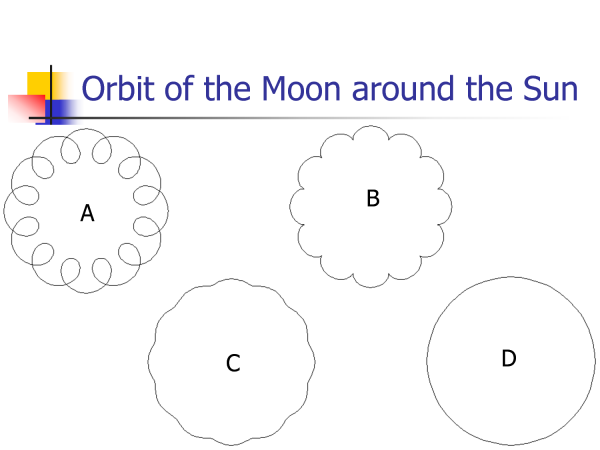 Images credit: Helmer Aslaksen, Department of Mathematics, National University of Singapore. Retrieved from http://www.docstoc.com/docs/39264982/Orbit-of-the-Moon-around-the-Sun.
Images credit: Helmer Aslaksen, Department of Mathematics, National University of Singapore. Retrieved from http://www.docstoc.com/docs/39264982/Orbit-of-the-Moon-around-the-Sun.
Believe it or not, the answer is D, which is what rob alludes to. A would only be possible if the Moon moved around the Earth more quickly than the Earth moves around the Sun. The Moon's geocentric speed averages about 1 km/s, while the Earth's heliocentric speed averages about 30 km/s. That huge difference -- along with the fact that Earth's orbit around the Sun is literally hundreds of times larger than the Moon's around the Earth -- means that the Brittanica picture, which shows a section of C, is an exaggeration. The Moon's orbit never curves away from the Sun, even during new Moons. So diagram D is the most accurate representation.
Thanks for your great comments, and for keeping the discussion alive. I hope you enjoyed this edition of Comments of the Week!
- Log in to post comments

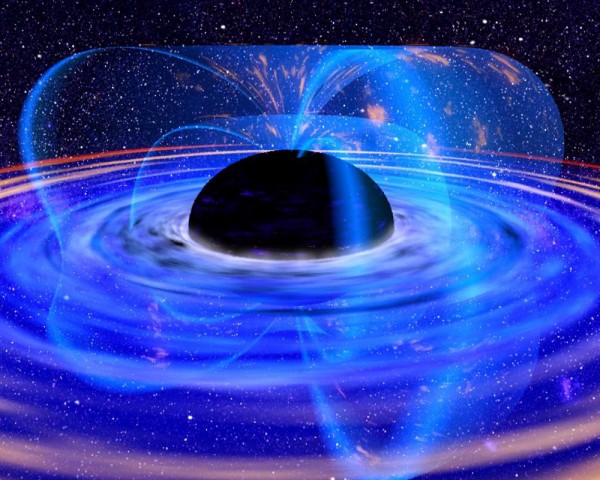
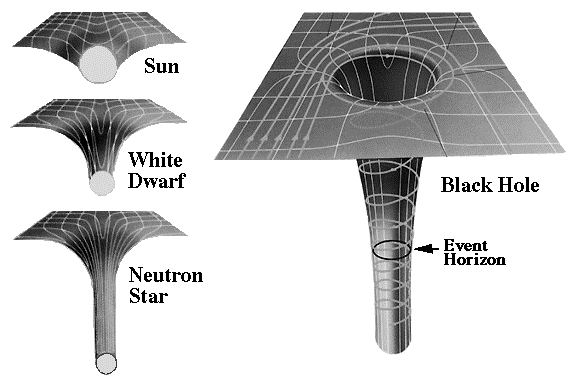
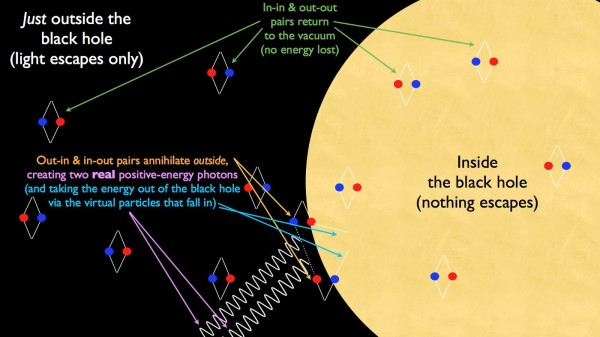
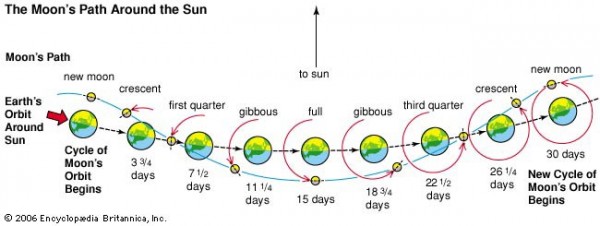
Thank you for the answer. I wasn't attempting to negate the answer about constants. So yes, my comment wasn't on the subject, my apologizes for that. I guess, "well below" plank scale just touched a cord :)
Since this 10^16 is right at theoretical GUT predictions for unification of forces. Is actually the highest energy probe we managed to pull out and much closer to rule out some theories forever. (if confirmed of course). Guess I'm just a bit more enthusiastic. :)
Ethan,
I am more than a bit unsure about your your claim that D is the best orbital representation of the moon's path around the sun. The earth and moon rotate about their common center of gravity and share essentially the same ecliptic plane as the earth-sun orbit. About 26.737 (see below) times a year, either the earth or the moon is closer to the sun. I am quite certain that C is the correct, albeit exaggerated, representation.
As a mathematically competent draftsman I could plot a typical earth-moon annual revolution about the sun to actual scale and send it to you in a CAD format if need be.
( 365.256 ÷ 27.322 x 2 = 26.737 - either the earth or the moon)
O.K. if "D" is correct I did not know that the moon was in a polar orbit that parallels Earths around sun. I have no fancy education I agree with MANDOZINK that "C" is better choice. Not to scale and with inner part of curve (having too sharp of radius at point midway) be more as outside with smoother radius shown through it is how I see it. I may be wrong though!
@Ethan: Thanks for clarifying my comment! Obviously, you're correct. The Hawking temperature for anything astrophysical is ten-to-the-minus-lots :-), far below pair-production temperature. Presumably, some primordial or "micro" black-holes might be there as they evaporate, in which case we still wouldn't be able to tell matter from antimatter versions.
Ethan,
There are lots of relatively new or planned astronomical observatories and/or spacecraft these days. Can you list the ones you think might have the largest impacts on astronomical knowledge or understanding, and why?
Along with MandoZink and BVilla, it's difficult for me to see that given (1.) that the plane of the moon's orbit is more or less coincident with the plane of the earth's, and (2.) that the earth-sun distance is nearly constant, at least during the period of one lunar cycle, how it can be true that "The Moon’s orbit never curves away from the Sun, even during new Moons."
Ethan,
Not wanting to be wrong, I ended up plotting the orbit of the moon around the sun using AutoCAD. I simplified it using circular orbits rather than ellipses. It took me a while and I made sure I had the orbital directions correct. I plotted hundreds of lunar points,18 per a single lunar orbit about the earth, and connected the dots.
Sure enough, it DID resemble figure C. At the scale of the earth's solar orbit, the ripple of the lunar orbit is barely noticeable. But it surely does alternate between curving towards, then away, from the sun, approximately 13 times a year.
The precise numbers in my earlier post (earth closer, then moon closer) may not be truly accurate as they were calculated from published averages.
As far as moon/sun orbit. This should help
http://en.wikipedia.org/wiki/File:Moon_trajectory1.svg
http://www.math.nus.edu.sg/aslaksen/teaching/convex.html
@Sinisa Lazarek
Thanks. The wikipedia image was an accurate representation. The in/out motion of the moon is barely perceptible at the true scale of the orbits. The other link you posted called the moon's orbital shape a "12-gon with rounded corners ....more like a 13-gon", and their depiction looked practically like a circle, or quite like image D above.
As a matter of fact, I took both their image, and image D above, dropped them into autocad, and superimposed a hairline circle on top of each. Both web graphics were so low res it was hard to tell, but they may both have originally been "12-gons with rounded corners". I had originally plotted my cad orbital path with exaggerated orbits to make the ripples stand out, which resembled the squiggly C image above.
Oh well. No matter. I don't mean to be a "graphic nazi". At least we do know what it does.
does the sun revoles in orbit